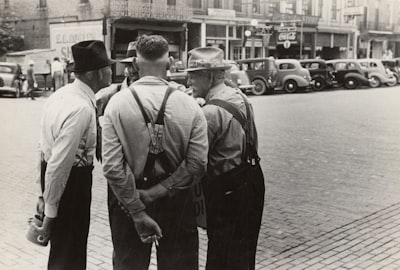Overview
Racial profiling in immigration enforcement refers to the use of race, ethnicity, or national origin as a primary factor in law enforcement decisions, including stops, questioning, detention, or arrest of individuals suspected of violating immigration laws. This practice is widely contested and has been the subject of legal challenges, policy debates, and scholarly analysis in the United States, particularly since the late 20th century.
Historical Background
The issue of racial profiling in U.S. immigration enforcement has deep historical roots, dating back to early 20th-century policies targeting specific immigrant groups, including the Chinese Exclusion Act and the internment of Japanese Americans during World War II. Heightened border security measures and the establishment of agencies such as the U.S. Border Patrol in 1924 increased opportunities for profiling along the U.S.–Mexico border and in interior enforcement actions.
Legal Context
The Fourth Amendment to the U.S. Constitution protects individuals from unreasonable searches and seizures, while the Equal Protection Clause of the Fourteenth Amendment prohibits discrimination based on race or ethnicity. Federal and state courts have addressed the legality of racial profiling in various contexts, balancing public safety interests against civil rights protections. Landmark cases, such as "United States v. Brignoni-Ponce" (1975), have ruled that law enforcement officers may not solely use apparent ethnicity as a basis for stops and questioning regarding immigration status.
Immigration Enforcement Practices
During several presidential administrations, including those of George W. Bush, Barack Obama, Donald Trump, and Joe Biden, policies regarding immigration enforcement have fluctuated, particularly in the intensity and location of raids targeting undocumented immigrants. Reports by advocacy groups and investigative journalism have highlighted instances of broad enforcement sweeps in workplaces, neighborhoods, and transportation hubs, sometimes primarily targeting individuals based on skin color, language, or occupation associated with certain ethnic groups.
Criticisms and Civil Liberties Concerns
Civil liberties organizations such as the American Civil Liberties Union (ACLU) have criticized the use of racial profiling in immigration enforcement as both ineffective and unconstitutional. Critics argue that profiling leads to the violation of the rights of U.S. citizens and legal residents, fosters mistrust between immigrant communities and law enforcement, and contravenes fundamental principles of equal protection under the law.
Legal Challenges and Court Orders
Numerous lawsuits have challenged racial profiling practices, resulting in federal and state court orders restricting or enjoining certain law enforcement behaviors. Courts have sometimes issued temporary restraining orders or preliminary injunctions to halt enforcement activities pending further litigation. These legal actions are often supported by evidence collected by plaintiffs’ attorneys, including documentation of stops, arrests, or detentions based predominantly on racial or ethnic appearance.
Government Stance and Arguments
Government agencies, such as the Department of Homeland Security and Immigration and Customs Enforcement, have generally denied engaging in racial profiling. Officials claim that enforcement actions are based on targeted intelligence, surveillance, and other lawful investigative techniques that consider the "totality of the circumstances" rather than race alone.
Policy Responses and Reforms
In response to public outcry and legal rulings, some states, municipalities, and federal agencies have implemented guidelines or regulations to prohibit or limit racial profiling in law enforcement, including the establishment of complaint mechanisms and oversight bodies. Training programs for law enforcement officers increasingly address implicit bias and legal standards governing stops and searches.
Conclusion
Racial profiling in immigration enforcement remains a contentious and evolving issue in the United States. It sits at the intersection of concerns about national security, public safety, civil rights, and the nation’s historical relationship with immigration.
References
- United States v. Brignoni-Ponce, 422 U.S. 873 (1975)
- American Civil Liberties Union, advocacy reports on racial profiling
- Migration Policy Institute, analyses of U.S. immigration enforcement policies

Comments
No comments yet. Be the first to comment!